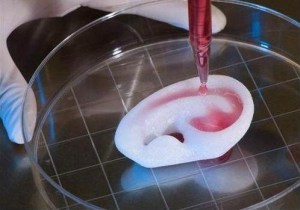 Your liver is failing critically. A transplant would save your life, but there’s a long waiting list and the odds are stacked against you. So instead, doctors extract some of your bone marrow, liver and muscle cells, go back to their laboratory and return in a few weeks with … a freshly grown liver! Does this sound like material from a Hollywood sci-fi movie? Well Not anymore. Australian researchers in Melbourne are now hard at work growing spare parts, proving their stuff in animal – and even human trials!
Your liver is failing critically. A transplant would save your life, but there’s a long waiting list and the odds are stacked against you. So instead, doctors extract some of your bone marrow, liver and muscle cells, go back to their laboratory and return in a few weeks with … a freshly grown liver! Does this sound like material from a Hollywood sci-fi movie? Well Not anymore. Australian researchers in Melbourne are now hard at work growing spare parts, proving their stuff in animal – and even human trials!
“It’s a remarkable field, with enormous potential,” says Wayne Morrison, director of the O’Brien Institute at St Vincent’s Hospital in Melbourne and professorial fellow in the department of surgery at the University of Melbourne.
“There is a sense of steady advance,” Morrison says, noting that a key reason for progress is the multidisciplinary nature of tissue generation and regeneration.
“Historically, there has not been much interaction between surgeons, cell biologists, as well as chemical engineers and designers. I’m pleased to say that is changing with both the practical people and the theory experts learning a great deal from each other.”
Morrison is a plastic and reconstructive surgeon. Part of his work involves transplanting blood vessels from a healthy part of a patient’s body to a diseased or injured part to aid recovery. He noticed the new blood vessel would start to promote tissue growth, although the process wasn’t easy to observe.
“We came up with the idea of enclosing the [growing tissue] in a plastic chamber that was surgically inserted into the patient’s body,” he says, explaining that the idea was to see what was happening.
“We were surprised that the chamber quickly filled up with healthy tissue around the vessel. The chamber was acting like a scaffold, a magnet for cells. So in trying to do one thing we found something that was even more important.”
Further experiments revealed that the location of a chamber determined the types of tissue that were generated. Morrison says it’s not clear how this happens but he suggests it may be linked to the proximity of other types of cells, which cue the formation of the new tissue.
When it comes to growing new tissues for transplants, the truly sci-fi advance is the bio-printer a device that “prints” three-dimensional tissue on to a template. A Melbourne company Invetech developed the technology for Organovo, a biotech firm based in San Diego, California.
“It was a matter of applying Invetech’s expertise in engineering and automation with Organovo’s background in regenerative medicine,” says Invetech’s managing director Fred Davis. “This collaboration was important not only on the robotics side, but also in areas like the software that controls the living cell printing process, where Organovo biologists worked with Invetech software engineers to provide easy-to-use shape programming.”
The bio-printer works by dispensing cells taken from the patient’s body, layer by layer, to create a 3-D tissue or organ. A gel is used to fill in gaps and provide physical support while the cells organize themselves into patterns and bind together. The gel is removed in the lab during a maturation process and the fully formed tissue or organ is then ready for the surgeon to transplant into the patient.
Invetech delivered the first bio-printer to Organovo late last year and Davis predicts production models will roll out soon.
It would seem as though science is really making head way into the future. While creating living tissue is important, the larger aim for science and medicine is creation of functioning human organs. Scientists have very high hopes that one day on the horizon not only organs can be grown in a lab but also nerves and tendons lost in such cases as spinal cord injuries and paralysis. Organ replacement will eventually enable humans to have indefinite lifespans through complete rejuvenation to a youthful condition.
Read more about tissue regeneration and organ growth research
Here’s a fascinating video on the 3D Bio-Printer
Maria Konovalenko
SCIENCE FOR LIFE EXTENSION FOUNDATION
http:/mariakonovalenko.wordpress.com/
maria.konovalenko@gmail.com

